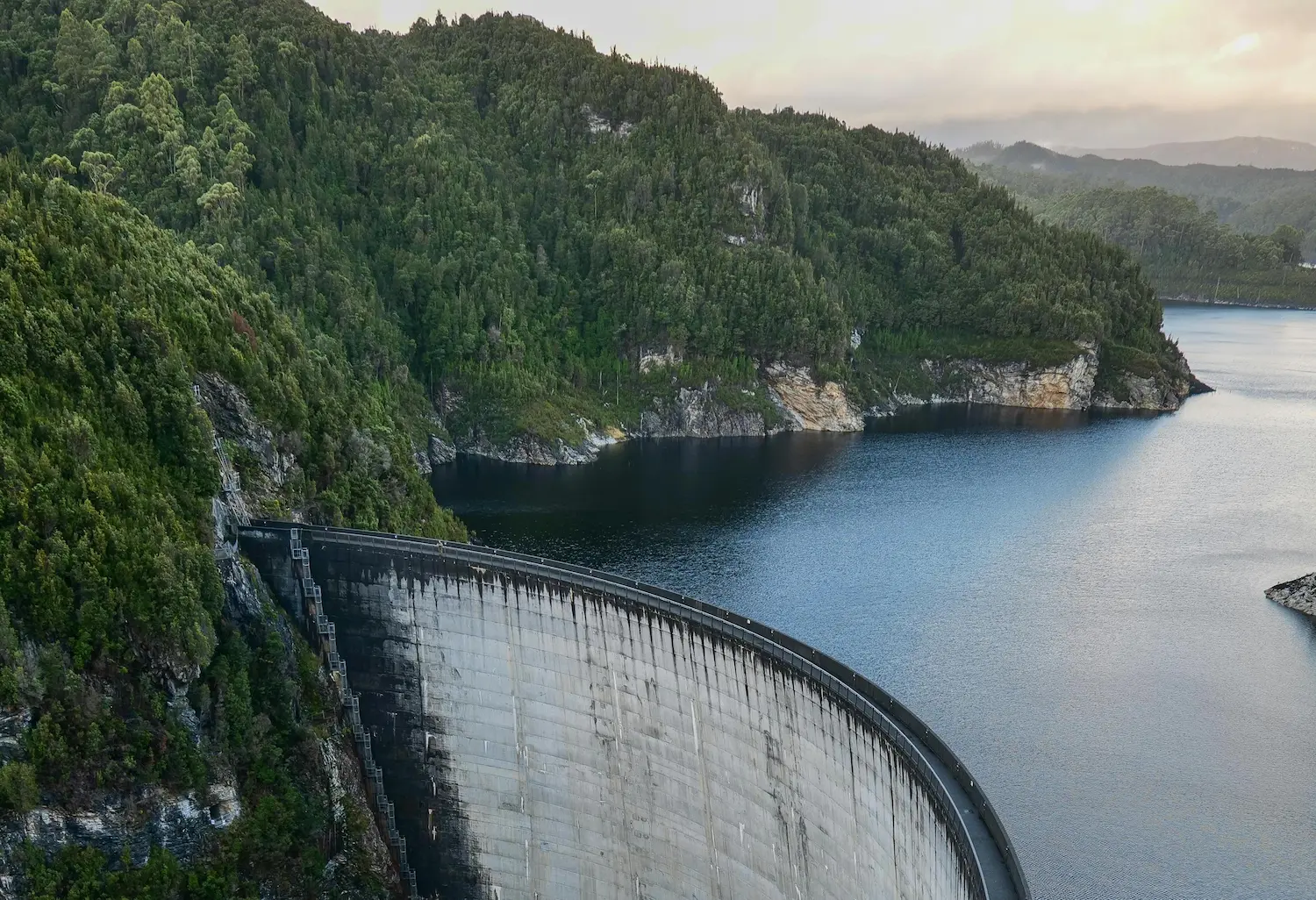Ready to turn insight into action?
We help organisations transform ideas into measurable results with strategies that work in the real world. Let’s talk about how we can solve your most complex supply chain challenges.

When Tropical Cyclone Alfred tore through Queensland and northern New South Wales in March 2025, it didn’t just bring floods and chaos—it showcased the extraordinary courage of volunteers and first responders who stepped up to save lives. For Emergency Agencies like State Emergency Services (SES), Fire Rescue, Police, Paramedics, as well as Government and Defence organisations in Australia and New Zealand (ANZ), a strong supply chain underpinned their heroic efforts. At Trace Consultants, we’re proud to support these teams by building supply chains that match their dedication.
This article explores the pillars of emergency response supply chains—Network Design, Inventory & Stocking Policy, Preparedness, and Workforce Readiness—drawing on lessons from Cyclone Alfred. We’ll commend the tireless work of volunteers and first responders, and show how Trace Consultants can help ANZ organisations prepare for the next crisis.
Why Emergency Response Supply Chains Matter After Cyclone Alfred
Tropical Cyclone Alfred struck in March 2025, dumping over 400mm of rain across Queensland and NSW, flooding towns like Gympie and Lismore. Volunteers sandbagged homes, first responders rescued families from rooftops, and agencies like SES and the Australian Defence Force logged thousands of hours. Their bravery was awe-inspiring—but it relied on supply chains delivering fuel, food, and gear in brutal conditions.
Honouring Heroes, Strengthening Systems
In 2025, climate-driven disasters, urban sprawl, and tight budgets make robust supply chains vital. Volunteers and first responders—like the SES crews who worked 24/7 during Alfred—deserve systems that keep them equipped. For NZ Fire and Emergency, Victoria Police, or Defence, it’s about supporting these heroes while managing costs.
Core Elements of Emergency Response Supply Chains
Here’s how ANZ can refine supply chains to back up the incredible work seen during Alfred.
1. Network Design: A Backbone for Heroes
Speed Saves Lives
Your network—warehouses, depots, routes—determines how fast supplies reach volunteers and responders. Alfred’s flooded roads showed that in ANZ’s vast landscape, smart design is a lifeline.
Alfred’s Network Test
Cut-off highways slowed aid to places like Murwillumbah, but pre-placed hubs near cyclone zones kept some SES teams going. Flexibility—rerouting around downed bridges—was key.
How Trace Consultants Can Help
Trace Consultants crafts networks that power rapid response. We’ll map your setup, target high-risk areas like cyclone-prone Far North Queensland, and optimise hubs for speed and resilience. Our plans ensure volunteers and responders get what they need, fast.
2. Inventory & Stocking Policy: Equipping the Frontline
Beyond the Basics
Stocking isn’t guesswork—Alfred proved that. Floods demanded more than sandbags; mosquito repellent was critical as water pooled, risking Ross River fever outbreaks. Analysis, not intuition, reveals these needs.
Stocking Smarter Post-Alfred
In 2025, ANZ must stock for reality—medical kits for Paramedics, repellent for flood zones, respirators for fire seasons. Alfred showed pre-positioning near hotspots beats overstocking centrally.
How Trace Consultants Can Help
Trace Consultants turns data into action. We’ll design policies post-Alfred, factoring in surprises like mosquito repellent, ensuring volunteers and responders have essentials without waste. Our lean approach keeps costs down and readiness up.
3. Preparedness: Ready for the Next Call
Planning Fuels Action
Preparedness means anticipating chaos—like Alfred’s 700mm deluge—and having systems in place. Volunteers and first responders shone, but supply chain gaps slowed some efforts.
Alfred’s Lessons in Action
SES volunteers handled 3,500 calls in a day, backed by Defence’s 120 troops. But planning faltered where stocks lagged. Trace Consultants’ work with the Office of Supply Chain Resilience (OSCR) has shaped national strategies, and our Australian Defence Force projects have sharpened rapid deployment.
How Trace Consultants Can Help
With OSCR and ADF experience, we’ll simulate Alfred-scale crises, build tailored plans, and align partners. Our expertise ensures your supply chain supports volunteers and responders as effectively as they serve communities.
4. Workforce Readiness: Powering the People
Heroes Need Backup
Alfred’s success rested on volunteers and responders—exhausted but relentless. In 2025, ANZ faces staffing strains, but a ready workforce keeps supply chains humming.
Scaling Up Like Alfred
Cross-trained Paramedics moved gear, and SES reserves filled gaps. Tech tracked teams, but readiness varied. Supporting these heroes means training and tools for the long haul.
How Trace Consultants Can Help
Trace Consultants bolsters your workforce. We’ll assess needs, train for supply roles, and deploy tech to match skills to tasks. Post-Alfred, we’ll ensure your people—volunteers included—are as ready as your plans.
5. Assets and Partners: Supporting the Effort
Assets Under Pressure
Alfred trashed roads, but ADF trucks and SES boats pushed through. ANZ’s rugged terrain demands tough, maintained gear to back volunteers and responders.
Partners Stepping Up
Fuel suppliers and NGOs kept pace during Alfred, but weak links cost time. In 2025, reliable partnerships—like those volunteers relied on—are non-negotiable.
How Trace Consultants Can Help
We keep assets and partners battle-ready. Trace Consultants will audit your equipment, plan maintenance, and lock in solid supplier deals. Our work ensures volunteers and responders have the tools and support they deserve.
Challenges Facing Emergency Supply Chains in 2025
Alfred highlighted hurdles ANZ must tackle:
1. Geography’s Reach
Remote areas like Cape York stayed isolated too long.
2. Funding Limits
Budgets forced trade-offs—more boats or more masks?
3. Unseen Twists
Alfred’s erratic path defied forecasts.
4. Coordination Snags
Agency silos frustrated volunteers’ efforts.
These challenges test even the best—but they’re not unbeatable.
Opportunities After Cyclone Alfred
Alfred’s heroes—volunteers and first responders—showed what’s possible. In 2025, ANZ can:
- Speed Response: Pre-stocked hubs cut delays for SES crews.
- Save Costs: Smart policies free funds for frontline gear.
- Tech Up: Drones, trialled in Alfred, can scale.
Their grit inspires us. Collaboration—like ADF-SES teamwork—can grow stronger.
How Trace Consultants Can Strengthen Your Supply Chain
At Trace Consultants, we’re humbled by Alfred’s volunteers and responders—and driven to match their resolve. Here’s how we help ANZ Emergency Agencies, Government, and Defence:
1. Network Precision
We’ll optimise your network to get supplies to volunteers and responders fast, Alfred-style.
2. Inventory Expertise
Our policies stock essentials—like mosquito repellent in floods—keeping heroes equipped.
3. Preparedness Know-How
With OSCR and ADF roots, we’ll plan for Alfred-scale crises, supporting your frontline stars.
4. Workforce Support
We’ll train and tech-up your team—volunteers too—for seamless action.
5. Asset & Partner Reliability
We’ll ensure gear and suppliers back your responders without fail.
We work alongside you, turning lessons into strength. With Trace Consultants, your supply chain honours Alfred’s heroes.
Moving Forward: A Tribute to Resilience
Tropical Cyclone Alfred 2025 tested ANZ—and volunteers and first responders rose to it, from SES sandbaggers to ADF rescuers. For Emergency Agencies, Government, and Defence, refining networks, inventories, assets, and partners ensures their courage isn’t wasted. Mosquito repellent in floods, trucks in mud—these details matter.
Let’s salute their work by building better. Contact Trace Consultants today. Together, we’ll craft a supply chain as tough as ANZ’s finest.
Ready to turn insight into action?
We help organisations transform ideas into measurable results with strategies that work in the real world. Let’s talk about how we can solve your most complex supply chain challenges.









